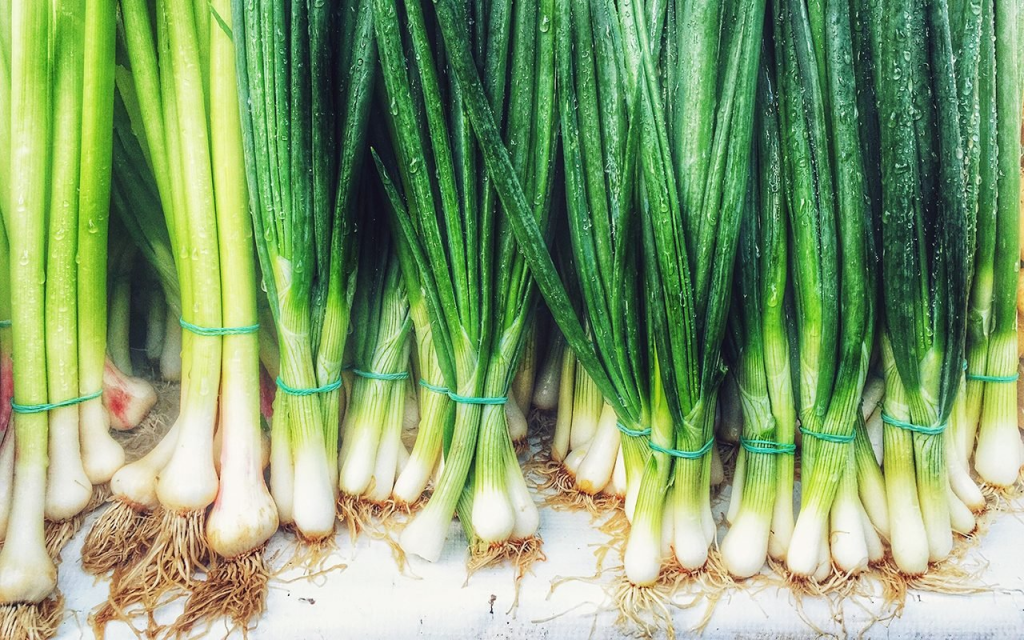In the culinary world, a quick trip to the store can unexpectedly turn into a heated debate, as I recently discovered. I picked up what I thought were green onions for my mother-in-law, only for her to dismiss them as scallions—and she wasn’t exactly gentle with her words. This led me to question: are green onions and scallions really different, or just two names for the same ingredient? Here, we’ll break down the mystery to help clear up this common kitchen conundrum.
Understanding the Confusion: Green Onions vs. Scallions

The mix-up between green onions and scallions is understandable, given how often they’re used interchangeably in recipes and grocery stores. The confusion is further fueled by regional differences in terminology and culinary habits. Whether you call them green onions or scallions, it’s essential to understand what they are and how they can be used in your favorite dishes.
What Exactly Are Green Onions?
Green onions, sometimes called spring onions in certain regions, are young onions harvested before they fully mature. They have slender green stalks with a small white bulb at the base, and the entire plant is edible. Known for a mild onion flavor, green onions are popular in a variety of dishes. Whether chopped fresh in salads or cooked into stir-fries and soups, they add a subtle touch without overpowering the dish.
Green onions work well in raw applications where you want a hint of onion flavor without the sharpness of a mature onion. Their versatility makes them a favorite garnish for salads, soups, and even tacos. They’re easy to find in grocery stores and are often labeled as “green onions” in many English-speaking regions outside the United States.
So, What Are Scallions?
Scallions are often regarded as a type of green onion and are harvested at a similar young stage, with the same appearance: long green stalks with a small white base. They’re usually found in stores under the label “scallions” in the U.S., though they’re essentially the same as green onions.
The distinction, however, lies primarily in the term used. In many parts of the United States, “scallion” is the preferred term, while in other countries, “green onion” is more common. Both green onions and scallions have nearly identical taste profiles and can be used in the same culinary applications. So, while you may hear people use different names, these vegetables serve the same purpose in cooking.
The Botanical Perspective: Are Green Onions and Scallions Different Plants?
Botanically speaking, green onions and scallions are typically the same plant species, Allium fistulosum, which is a species known for not developing a large bulb like other onion varieties. Both green onions and scallions belong to this species, meaning they’re technically the same. The lack of a fully developed bulb allows them to maintain their mild flavor and tender texture, making them ideal for recipes that benefit from a light onion taste.
While some people may argue there are minor differences based on cultivation or regional types, for most practical purposes, green onions and scallions are identical. Knowing this can help avoid unnecessary confusion when shopping for ingredients or following recipes.
Cooking with Green Onions and Scallions: Similarities and Subtle Differences

In the kitchen, green onions and scallions are a cook’s best friend. Their mild flavor and tender texture make them versatile ingredients that can be used interchangeably in most recipes. They’re perfect for:
- Garnishes: Add them raw to salads, tacos, baked potatoes, and even grilled meats for a fresh, mild onion kick.
- Stir-Fries and Soups: Toss them into stir-fries or soups to infuse a gentle flavor that complements other ingredients without overpowering them.
- Sauces and Dips: Minced green onions or scallions are fantastic in dips, dressings, and salsas.
Although green onions and scallions can be used interchangeably, some chefs prefer one term over the other depending on regional culinary traditions or personal preference. The key is to focus on the desired flavor and texture, as both offer the same mild, fresh onion profile.
Common Misconceptions and Regional Variations
One widespread misconception is that green onions and scallions are two distinct plants, but as we’ve seen, they are largely the same. Regional terminology often fuels this confusion. In some countries, “spring onion” refers to a slightly different stage of growth, further adding to the misunderstanding. Knowing these regional differences can make it easier to identify the right ingredient for your recipes, wherever you are.
Additionally, in some regions, spring onions are distinguished from green onions and scallions by their more developed bulb and a stronger flavor. This may cause some to believe they’ve encountered a different plant altogether, but in essence, they’re all part of the same extended onion family.
Dealing with Criticism (and Family Drama) Over Green Onions vs. Scallions
Finding yourself on the receiving end of criticism, especially from family members, can be tough, especially when it’s over something as seemingly small as green onions versus scallions. In situations like this, it’s best to keep calm and open-minded. A little humor and grace can go a long way in handling any misunderstandings or rude remarks. Plus, learning the culinary distinctions yourself can help you educate others next time the topic comes up.
Consider it a chance to expand your knowledge of food and ingredients, which might even come in handy the next time you’re cooking or hosting. And remember, the terms might vary, but the taste and purpose in the kitchen remain the same.
Embracing the Learning Experience
Navigating the green onion versus scallion debate is a reminder of how something as simple as grocery shopping can turn into a learning experience. By understanding the similarities and differences between these terms, you can shop more confidently and follow recipes with ease. You might even get a laugh out of the next conversation about the differences between green onions, scallions, and spring onions.
So, the next time someone questions whether you’re buying green onions or scallions, you can confidently tell them they’re essentially the same thing. Armed with this knowledge, you’ll be prepared for any culinary debates that come your way!
Conclusion
The debate between green onions and scallions boils down to one thing: they’re virtually the same. While regional preferences may dictate which term people use, both green onions and scallions come from the same plant and share the same culinary uses and mild flavor. The key difference lies more in name than in taste or function.
Whether you call them green onions or scallions, these mild, versatile veggies are a staple in countless recipes worldwide. Embrace the learning experience, brush off any critiques, and enjoy the simplicity of knowing that, in the end, they’re two names for one delicious ingredient. After all, cooking is all about bringing people together—regardless of what you call the ingredients.


